I want to create an opportunity for machines to understand human sensibilities
Erina Murata, 2nd year Graduate School of Human Sciences

I am working on a research project to quantify and model human sensibility through machine learning. Sensibility is deeply rooted in the situation and environment at that moment, past experiences, and even an individual's personality and values, so it is very difficult to fully express it with a single number or algorithm. However, this difficulty is what attracts me to this topic. If we can model sensibility, it will be a trigger for machines to understand human sensibility. This will allow machines to empathize with humans on a deeper level and become a reassuring presence that can cooperate with them.
Since I was in elementary school, I loved the short stories (very short stories) of science fiction writer Hoshi Shinichi. I remember reading them with excitement, wondering, "What kind of world would it be if machines had sentience?" That curiosity has been a major factor in shaping my current passion for research.
My current research involves using machine learning to quantify and evaluate the degree to which readers of posts on SNS X (formerly Twitter) feel the poster's desire for approval. To improve the accuracy of machine learning, training data (*1) is required. Therefore, human evaluators determine whether or not they feel a desire for approval for posts on X, and the results are used as training data for machine learning. This allows the machine to automatically classify new posts, enabling it to process large amounts of data efficiently and quickly. We also use text mining (*2) and statistical analysis to analyze how behavior (language used on X, frequency of posts, etc.) differs depending on the strength of the poster's desire for approval.
(*1) Data used to train a machine learning model. For each input data, a corresponding correct answer (label) is assigned.
(*2) A method of applying statistical techniques and natural language processing to text data to reveal patterns, relationships, sentiment, topics, etc. in the data.

This is part of the background of the research content. When creating slides, I aim to convey the core of the research in a way that is easy for readers to interest.
At present, machines cannot directly understand human sensations and sensibilities. Therefore, we believe that by quantifying the psychological characteristics of users on social media, particularly their desire for recognition, and visualizing their behavioral patterns, we can contribute to "creating an opportunity for machines to understand human sensibilities." This may also lead to predictions of user behavior on social media and the proposal of more effective communication methods.
In September 2023, I participated in the China-Japan-Korea Foresight Project organized by Japan Society for the Promotion of Science and presented my research results at a workshop held in Nanjing, China. This project is a valuable forum for researchers specializing in artificial intelligence and networks from Japan, China, and Korea to exchange ideas and gain new knowledge together. The workshop not only provided me with an opportunity to present my research, but also allowed me to interact with many researchers. I was able to receive feedback from various fields and get ideas for new approaches, making it a very meaningful experience.
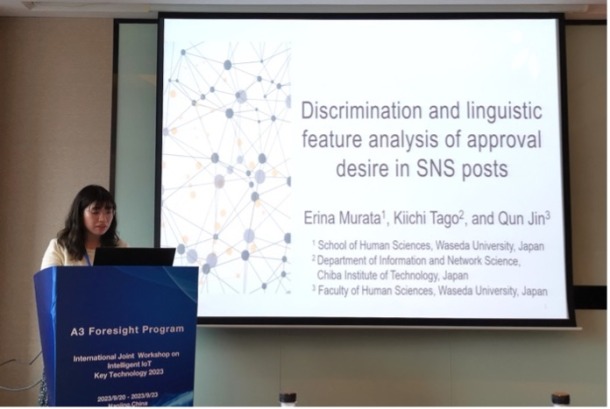
The Japan-China-Korea Foresight Project presented a paper titled "Analysis of the desire for recognition in social media posts using machine learning."
Research isn't always smooth sailing, but I realized that the days I spend not working on my research are more painful than the days when things aren't going well. There is value in continuing to try, even if you don't see results right away, and the fact that I'm facing a topic that I truly want to explore is what motivates me.
Daily Schedule
- 09:00 Wake up
- 10:00 Research at home (I read previous research to improve my output)
- 12:00 Lunch (I like the white (salt) ramen at Menji Waseda branch)
- 13:00 Research at university
- 20:00 Dinner (occasionally drinking party)
- 23:00 Create slides at home (to visualize research progress)
- 25:00 Bedtime
Left: Laboratory on the sixth floor of Building No. 100 on Tokorozawa Campus. When I talk with laboratory members, I get ideas that I would never have thought of on my own.
Right : Sometimes I go out drinking at night. My hobby is visiting bars all over the country. The photo shows me at a bar in Kobe, Hyogo Prefecture.

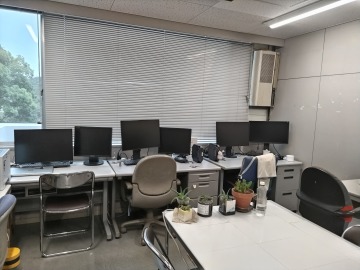

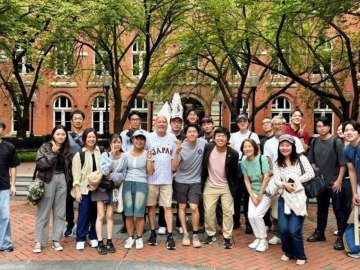

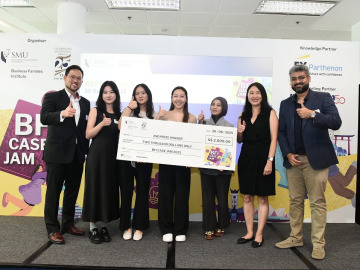
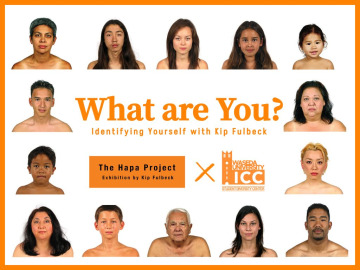

![[Save version] Map of the four main campuses](https://www.waseda.jp/inst/weekly/assets/uploads/2025/09/17cb2975123fc5103172ef60bd98608d-610x458.jpg)

